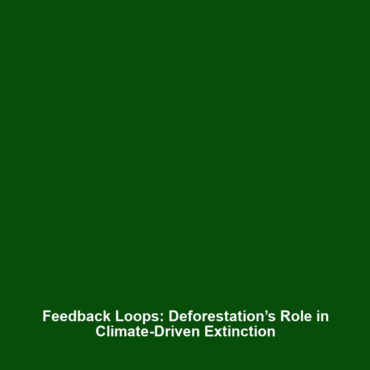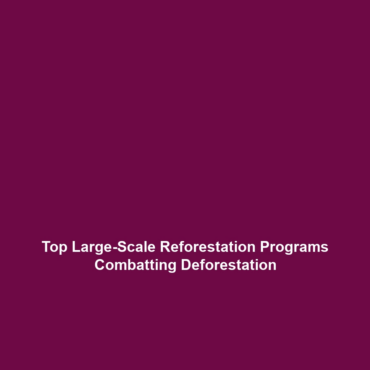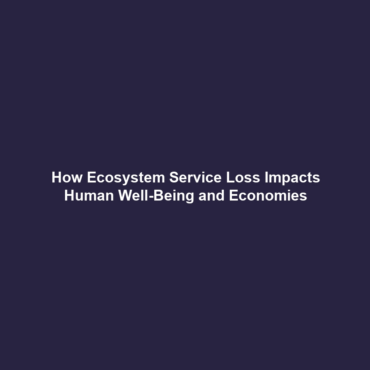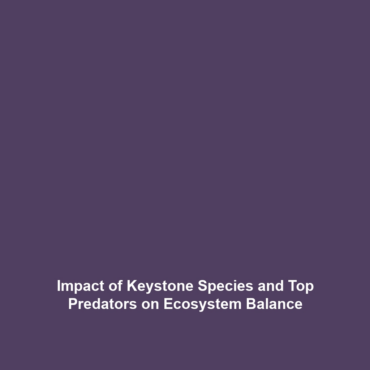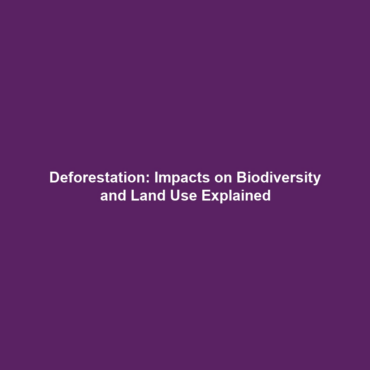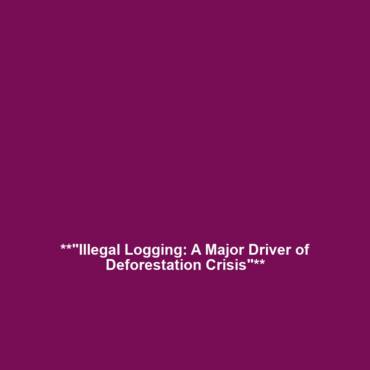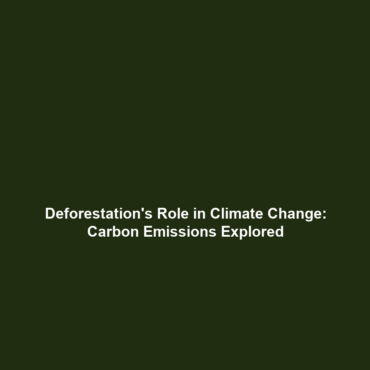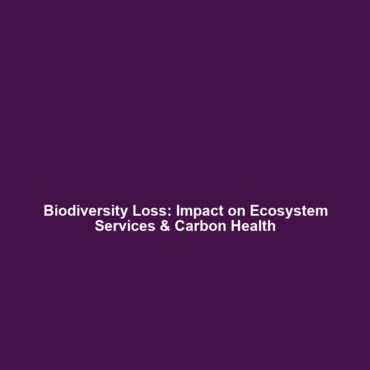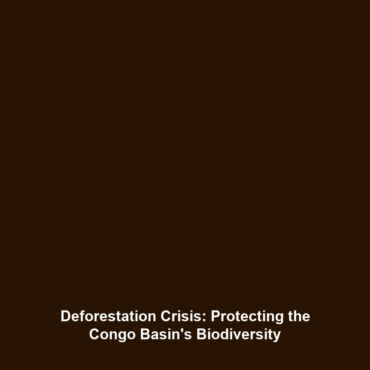Feedback Loops: How Deforestation-Driven Climate Change Exacerbates Further Habitat Loss and Species Extinction
Introduction
Feedback loops play a crucial role in the relationship between deforestation and biodiversity loss. As forests are cut down, greenhouse gases are released, leading to climate change that further destabilizes ecosystems. This process creates a detrimental cycle where climate change leads to more deforestation, intensifying the risks of habitat loss and species extinction. Understanding these feedback loops within the context of deforestation and biodiversity loss is vital for developing effective conservation strategies and mitigating climate impacts.
Key Concepts
Understanding Feedback Loops
Feedback loops are processes where an output of a system becomes an input, influencing future outputs. In the context of deforestation and biodiversity loss, one major loop involves:
- Carbon Emissions: Deforestation releases carbon dioxide, which contributes to climate change.
- Temperature and Weather Patterns: Altered climates can lead to more extreme weather, affecting forest health.
- Habitat Loss: Changing climates force species to migrate or adapt, leading to further habitat degradation and increased extinction rates.
This cycle exemplifies how deforestation-driven climate change exacerbates further habitat loss and species extinction, necessitating comprehensive approaches to address both issues.
Applications and Real-World Uses
Understanding the role of feedback loops in climate change allows for better strategies in mitigating the impacts of deforestation on biodiversity. Applications include:
- Conservation Planning: Integrating feedback loop insights into conservation strategies to enhance resilience of ecosystems.
- Forest Management: Implementing sustainable practices informed by this feedback understanding to prevent further habitat loss.
- Public Policy: Developing policies that recognize the interconnectedness of climate change and biodiversity conservation.
These applications illustrate how feedback loops are critical in addressing deforestation and biodiversity loss.
Current Challenges
Despite the importance of studying feedback loops in relation to deforestation and biodiversity, several challenges exist:
- Data Limitations: Lack of comprehensive data on forest ecosystems and their responses to climate change.
- Complex Interactions: Difficulty in modeling the complex interactions between species, habitats, and climatic factors.
- Funding Disparities: Limited funding for research dedicated to understanding these feedback mechanisms.
These challenges highlight the need for continued investment in research and data collection to understand the implications of feedback loops.
Future Research and Innovations
Advancing our understanding of feedback loops related to deforestation and climate change will require innovative research and technologies. Potential future developments include:
- Remote Sensing Technologies: Utilizing satellite imaging and drones to monitor forest health and wildlife populations.
- Artificial Intelligence: Employing AI models to predict ecosystem responses to various environmental changes.
- Integrated Ecosystem Models: Developing holistic models that account for both climate and biodiversity impacts.
These future innovations could provide critical insights, aiding in the fight against deforestation and the preservation of global biodiversity.
Conclusion
Feedback loops significantly impact how deforestation-driven climate change exacerbates further habitat loss and species extinction. This understanding is imperative for developing effective conservation strategies. By addressing the complexities of these feedback mechanisms, we can better mitigate the negative consequences on biodiversity. To learn more about how forest conservation initiatives can combat biodiversity loss, visit our related articles on conservation strategies and climate change impacts.
